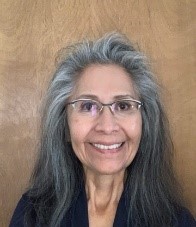October is Health Literacy Month. This is a time for those who work at health clinics, hospitals and for public health programs to promote the importance of providing clear health information to enable our patients and families to make informed decisions about their health. According to the National Assessment of Adult Literacy, nearly 9 of 10 patients have difficulty understanding routine health information.
What is Health Literacy?
Improving health literacy is critical to achieving the objectives in Healthy People 2020 , a plan that provides 10-year national objectives for improving the health of people across the U.S. Health literacy is defined as the degree to which individuals have the capacity to obtain, process, and understand basic health services and information. Health literacy involves reading as well as other skills (e.g. writing, listening, speaking, numeracy, and critical analysis) to perform health-related tasks. Other factors such as cultural background, past experiences, and socioeconomic status also play a role in how we process health information. Each day, we share health information, provide lab results, prescribe medications, make dietary recommendations, and handout written materials with the assumption that our patients will understand the information and take preventive actions to support their health. The reality is that many patients may not understand routine preventive information. Health services should be delivered in a way that is easy to understand. It is difficult for patients to adopt healthy behaviors or follow recommendations when they do not receive accurate and easy to understand information.
Low literacy contributes to poor health outcomes, increased use of emergency rooms, and decreased use of preventive services, missed appointments, and poor self-management of chronic conditions/diseases. People with a lower level of education, older adults, minorities, and those who are medically underserved are at higher risk for low literacy.
Limited health literacy also has psychological costs. Adults with limited health literacy skills may feel a sense of shame about their skill level and hide their struggles with reading or vocabulary. This may lead to health care providers and other public health professionals not being aware of the patient’s limited literacy skills.
What is IHS doing to support health literacy?
There is a growing body of evidence that supports the need to improve health literacy. Understanding that medical providers and clinicians are very busy, the IHS Health Literacy workgroup developed a short 20-minute health literacy and plain language training module that will be available at the Learning Management System in this fall. We encourage medical providers and clinicians to complete the online training and learn more about what you can do to support patient wellness.
Additional efforts underway to support health literacy include:
- Pretesting printed educational materials through focus groups and in-depth interviews to ensure messages are clear.
- Revising the IHS website.
- Hosting webinars on health literacy.
- Planning to refresh and promote “Ask Me 3” campaign to encourage patients and families to ask 3 specific questions of their providers to better understand their conditions.
All of us must work together to ensure that health information and services are provided in ways that meet the needs and interests of all people. You can support health literacy by:
- Take a free online training to learn more about health literacy , Writing for the Public , and Creating Easier to Understand Lists, Charts, and Graphs .
- Participate in ongoing training in health literacy, plain language, and culturally and linguistically appropriate services and encourage colleagues and staff to be trained
- Use the health factor tab in the Electronic Health Record to assess and document the patient’s level of understanding.
- Browse through the National Institute of Health Highlights of Health Literacy Programs and Activities website to generate ideas.
- Learn about the teach-back technique to enhance patients’ understanding.
- When creating communication products, involve members of the target audience in the design and testing of the materials.
Related Content:
Navajo Wellness Model: Keeping the Cultural Teachings Alive to Improve Health
Health Literacy Month Brings Attention to Importance of Delivering Clear Information to Patients



